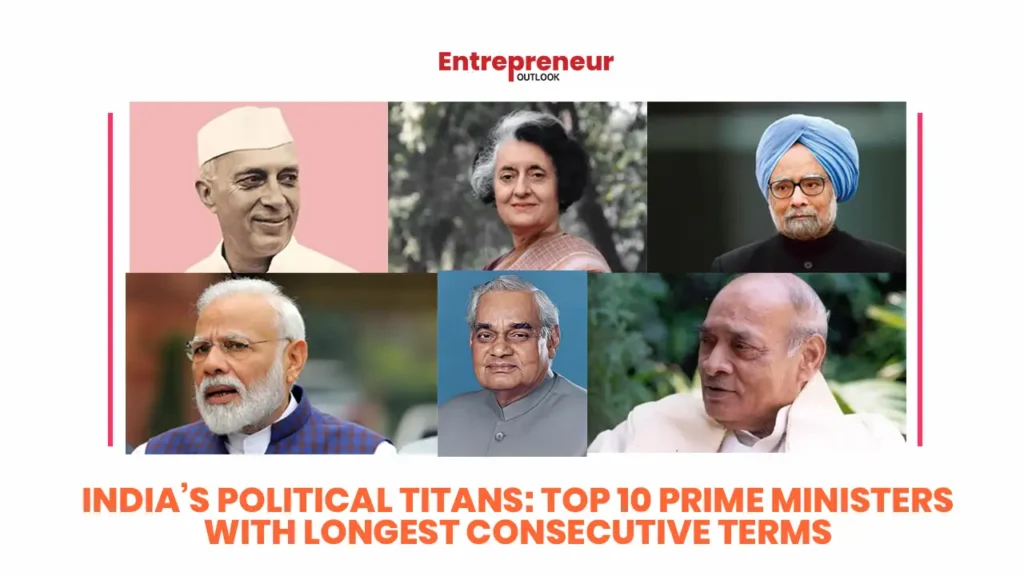By- Deepti Verma
The democratic path of India has been defined by leaders who gained public confidence and maintained it throughout their extended periods of governance. The Prime Ministers who maintained the longest consecutive terms in office demonstrated their ability to guide India through difficult times while building national stability and political stability across diverse population groups.
The following list presents the top ten Prime Ministers of India according to their consecutive term duration:
1. Jawaharlal Nehru (1947–1964)
Served for 17 consecutive years which remains the longest term in Indian history. Nehru became the first Prime Minister of independent India when he took office in 1947 and during his leadership, he established the base of contemporary India through industrial development and scientific advancement and foreign policy non-alignment. His leadership provided stability to the newly independent nation of India.
2. Indira Gandhi (1966–1977)
India’s first female Prime Minister when Indira Gandhi took office in 1966 and maintained her position for 11 years consecutive years. During her leadership India experienced the 1971 war and Bangladesh creation and the Green Revolution which established food security while she faced both praise and criticism for her strong yet sometimes divisive governance style.
3. Manmohan Singh (2004–2014)
Maintaining this position for 10 consecutive years. Dr. Manmohan Singh started his career as an economist before becoming Prime Minister and he the period of his leadership brought economic expansion and nuclear agreements with America and MGNREGA welfare programs although his government faced criticism for policy stagnation during his later years.
4. Narendra Modi (2014–present)
As Prime Minister for 10 consecutive years from 2014 until 2024. As current Prime Minister Narendra Modi continues to direct India’s political development through his mission to establish India as a leading global economic power. Modi has maintained his position and his administration has concentrated on building infrastructure and developing digital India and financial access and strengthening foreign policy relations.
5. Atal Bihari Vajpayee (1999–2004)
His strong public speaking skills earned him recognition as a respected leader During his five-year continuous services Vajpayee implemented economic reforms and started the Golden Quadrilateral Road project and led India to victory in the Kargil War through his inclusive leadership style.
6. Rajiv Gandhi (1984–1989)
Rajiv Gandhi served as Prime Minister for five years starting from 1984 when he became the youngest person to hold the position at age 40. During his leadership he focused on developing technology and telecommunications and education systems and he backed Panchayati Raj as a decentralization program.
7. P.V. Narasimha Rao (1991–1996)
During his five-year rule India experienced its most important liberalization period under Rao’s leadership. His leadership introduced economic reforms which transformed the nation’s path toward modernization during his time in office. The period under his leadership introduced India to modern global economic participation.
Conclusion
The extended periods of leadership by India’s longest-serving Prime Ministers demonstrate their capacity to development has been influenced by distinct approaches from each Prime Minister starting with Nehru’s nation-building efforts through maintain public support and their ability to adapt while showing resilience in office. The nation’s political and economic Indira’s assertive governance and Rao’s economic reforms and continuing with Modi’s current transformation efforts.
Their consecutive terms demonstrate their ability to win elections while leading India through difficult times and major changes which permanently shaped the democratic structure of the nation.
Must Read:



